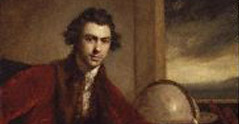|
CHINA INLAND MISSION, 1865-1951
From the School of Oriental and African Studies, London
Part 1: James Hudson Taylor Papers: Correspondence and Journals
Part 2: James Hudson Taylor Papers: Subject Files
Publisher's Note
Eugene Stock,
Sunday at Home, August 1905
Founded in 1865 with the goal of evangelising China’s inland provinces, the China Inland Mission (CIM) refused to appeal for funds. Instead, it demanded that all of its missionaries learn the Chinese language, wear Chinese dress and find a way of living without a guaranteed salary. Its representatives were international and interdenominational, and chosen for their spirituality, rather than their education, social class or gender.
Parts 1 and 2 of the CIM archive make available the papers of its remarkable founder, James Hudson Taylor (1832-1905), who was raised as a Methodist in Barnsley, and converted to evangelical Christianity at the age of 17. While his close colleague, William Thomas Berger (1815-1899), was in charge of matters in England, Taylor was in charge of the mission’s work in the field.
Part 1 provides all of his journals and letters, starting with his work for the Chinese Evangelisation Society in Shanghai, 1853-1856, and Ningpo, 1857-1860. The papers go on to cover the foundation of the CIM and his return to the mission field in China, right up to his death in Hunan province in 1905.
The CIM began its work in the aftermath of the Opium Wars, just as China was opening up to foreigners. Many missionaries encountered resistance, but through its work in education and medicine, and through its policy of becoming part of the local community, it achieved some degree of success. Nevertheless, it was hard hit during the Boxer Rebellion of 1900 when many of its members were targeted.
There are details of life in Canton, Hangchow, Ningpo and Shanghai and accounts of the riots in Anking in 1869, Chekiang in 1875 and Szechuan in 1895. There are travel journals, exchanges with other missionaries in the field, and detailed letters home describing the progress and setbacks of the mission.
There is much on women missionaries with papers concerning Mary Ann Aldersey (1797-1868), the first woman missionary in China, Maria Jane Dyer (1837-1870), a school teacher in China who became Taylor’s first wife, and Jenny Faulding (1843-1904), who sailed with the first party of CIM missionaries in 1866, and became his second wife. During the Shanxi famine of 1877-78 Jenny Taylor led other women in relief work, while her husband was forced to attend to administrative matters in London.
Part 2 covers the fourteen boxes of material collected by Geraldine Taylor, the wife of Taylor’s second son, Howard Taylor, who was also a missionary in China. Howard and Geraldine Taylor were the first historians of CIM and gathered the material on a thematic basis. Topics include:
- Early missions in China
- the Opium trade
- James Hudson Taylor’s preparation for life in China
- Shanghai
- Journeys to inland China
- Ningpo and JHT’s marriage to Maria Jane Dyer
- Formation of CIM
- the Forward Movement
- the Tientsin massacre and the Nanking riots
- American support for the CIM
- Shanghai missionary conferences
- Scandinavian support for CIM
- the Boxer Rising
- the death of JHT
- Histories of the CIM, recollections and assessments
This is an excellent source for all those interested in missiology, the progress of evangelical Christianity, interactions between East and West, and the social and cultural history of China.
Useful articles concerning Taylor, his papers and the CIM can be found at:
Archives in London and the M25 Area
OMF International (link 1)
OMF International (link 2)
<back
|















